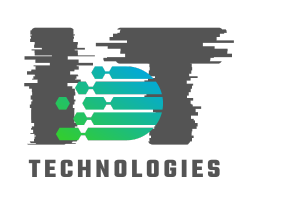
Latency in Leak Detection: How Timing Impacts Efficiency
Share
In the realm of modern technology, the concept of latency in leak detection has become increasingly crucial, especially for tech professionals and enthusiasts. The time lapse from the moment a leak occurs to when it is detected, known as latency, can significantly influence the effectiveness of mitigation measures. As we plunge deeper into the details, understanding latency isn't just importantit's pivotal for maintaining system integrity and preventing potential catastrophes.
Within the bustling panorama of tech advancements, the strides made in leak detection technologies are remarkable. Yet, without addressing latency, even the most sophisticated systems can fall short. Diving into the specifics of latency offers a clearer perspective on its critical role in ensuring rapid and effective leak management.

The Mechanisms Behind Leak Detection
Leak detection systems employ various mechanisms depending on their application. Understanding how these systems function is essential to grasping the impact of latency. Technologies range from simple mechanical sensors to advanced IoT-based solutions, each with its own latency considerations.
For instance, smart water leak detectors rely on a network of devices that communicate potential issues, necessitating real-time data transmission to minimize latency. This connectivity ensures timely alerts, reducing the risk of extensive damage.
The Impact of Latency: Timing Really Does Matter
Latency isn't just about time delays; it's a measure of a system's readiness and responsiveness. Tech professionals understand that even a few seconds of delay can escalate into significant water damage or resource wastage. For instance, in smart irrigation systems, delayed leak detection can lead to water resource depletion and increased costs.
By reducing the latency in leak detection, companies can enhance their operational efficiency. This is particularly vital in industries where real-time water management and conservation are paramount. Making informed decisions based on immediate alerts allows for quicker responses and cost savings.
Latency Reduction Strategies
One way to mitigate the effects of latency is through strategic implementation of innovative technology. IoT devices are pivotal in this regard, offering solutions that range from networked sensors to cloud data processing. Technologies that streamline communication between devices and decision-makers can effectively reduce latency.
Moreover, software optimizations and predictive analytics play significant roles. They facilitate not only faster data transmission but also intelligent anticipation of potential leaks, allowing for preemptive measures.
Real-World Applications and Examples
Consider a case study involving multi-device leak detection networks in commercial buildings. By analyzing these systems, tech professionals can pinpoint weak spots where latency could manifest and implement proactive measures.
Another example is seen in residential areas, where smart leak detectors are used to prevent property damage. These detectors provide instant alerts via apps, allowing homeowners to act swiftly, demonstrating the practical benefits of managing latency effectively.
Future Trends in Managing Latency
Looking ahead, the emphasis will likely shift towards integrating AI with leak detection systems. Artificial intelligence offers the promise of autonomously understanding patterns, predicting leaks, and executing real-time decisions, thereby minimizing latency further.
Furthermore, as systems grow more complex, collaboration among industry experts will be vital. Sharing insights into cost-effective solutions and advancements will pave the way for more resilient and responsive leak detection methodologies.

Conclusion: Embrace the Potential
In conclusion, effectively managing latency in leak detection can make the difference between proactive management and reactive crisis handling. By incorporating cutting-edge technologies, tech professionals can lead the way in setting new standards for efficiency and reliability.
For more insights into water conservation strategies and leak detection tools, keep exploring innovative solutions that push the boundaries of what's possible.
FAQ
Q1: What is the main challenge with latency in leak detection?
A: The main challenge is ensuring that leaks are detected in real-time to prevent extensive damage and loss. Addressing latency directly impacts the effectiveness of response measures.
Q2: How do IoT devices help reduce latency?
A: IoT devices facilitate faster communication between sensors and processors, allowing for quicker detection and real-time responses to potential leaks.
Q3: Are there emerging technologies that further minimize latency?
A: Yes, technologies such as artificial intelligence and predictive analytics are progressively being integrated into leak detection systems to anticipate and manage leaks proactively.
